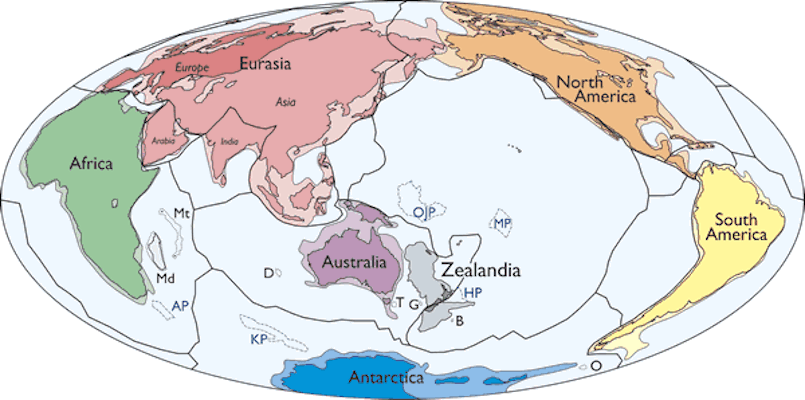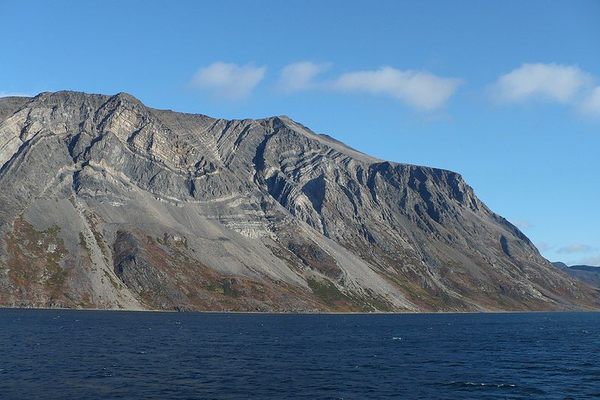Found: A Possible Eighth Continent
Zealandia!

One of the baseline geological facts of the world is that there are, in our current age, seven continents—North America, South America, Africa, Asia, Europe, Australia, and Antarctica. But a new paper published in GSA Today, the journal of the Geological Society of America, argues that list is incomplete. The paper’s authors suggest the existence of an eighth continent, Zealandia.
Zealandia, they report, extends 1.9 million square miles and is 94 percent underwater. The land that peaks above the ocean surface is primarily the two islands of New Zealand and the island of New Caledonia. But this land mass is elevated relative to other parts of the ocean floors and is isolated from Australia.
You might think that a continent is defined by its huge mass of land, and previous to this New Zealand was considered part of “Oceania,” a catchall for the non-continental parts of the world. But there are particular features that define continents, which don’t necessarily include large amounts of land above the current level of the oceans.
“The identification of Zealandia as a geological continent, rather than a collection of continental islands, fragments, and slices, more correctly represents the geology of this part of Earth,” the researchers write.
The idea of Zealandia has been around for at least two decades, but this is the first peer-reviewed paper to make the case for it. For New Zealand geologists, the idea is “nothing new,” The Guardian reports. Australia seems remarkably sanguine about the separation, especially considering that, as The Sydney Morning Herald reports, “Zealandia also includes parts of Australian territory, Lord Howe and Norfolk islands.” Perhaps this will finally explain the great Australia-New Zealand rivalry—they’re not just two English-speaking countries lumped together one corner of the world; they’re two English-speaking countries on totally different continents.



















Follow us on Twitter to get the latest on the world's hidden wonders.
Like us on Facebook to get the latest on the world's hidden wonders.
Follow us on Twitter Like us on Facebook